I recently had someone send me a message on the DairyCarrie Facebook page. In her message she included a link to a disturbing video made by the Animals' Angels group. This group is an Animal Rights group and the video contains some images that can be pretty disturbing. The person who sent me the message said that while she wasn't a dairy farmer she knew this video was "missing something" and that she would like me to explain some of the footage in this video.
First I would like you to know the difference between Animal Rights and Animal Welfare.
Animal Rights- The rights of animals, claimed on ethical grounds, to the same humane treatment and protection from exploitation and abuse that are accorded to humans.
Animal Welfare-Is the physical and psychological well-being of animals. It is measured by indicators including behavior, physiology, longevity, and reproduction.
[youtube https://www.youtube.com/watch?v=GzS8p727gvM?rel=0&w=640&h=360]
Let's go through this video with some truth and some knowledge, shall we?
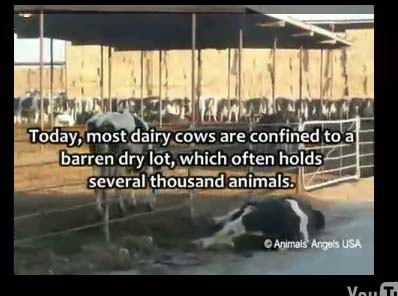

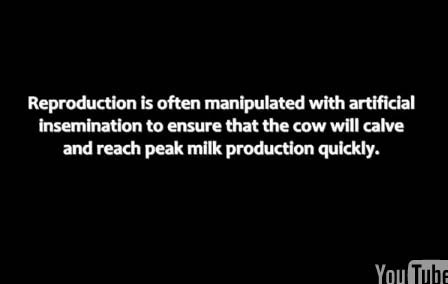

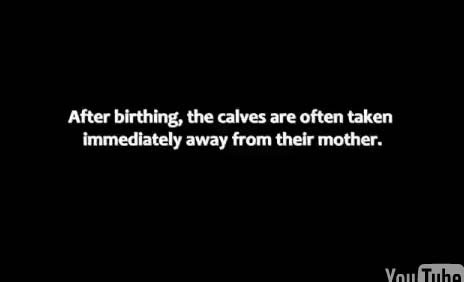

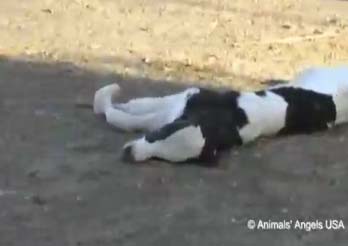
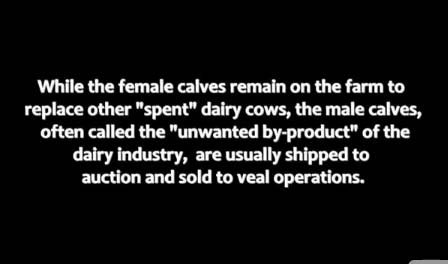
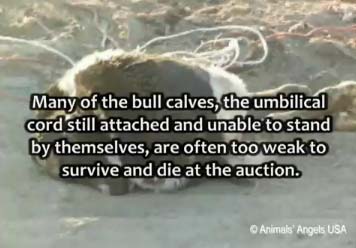
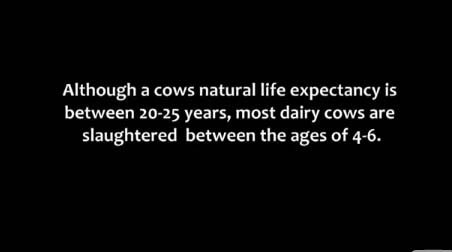
So now that we have gone through the first part of the video about a cows life, let's talk about the end of a cows life......
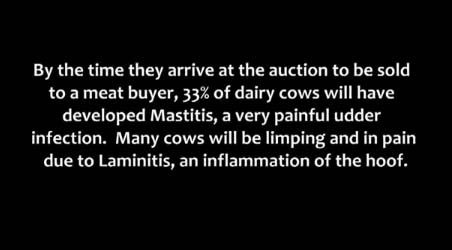
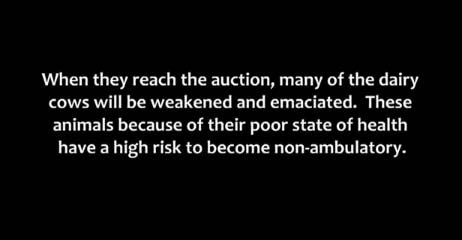

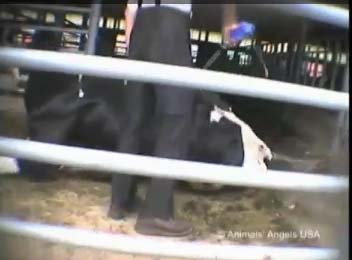
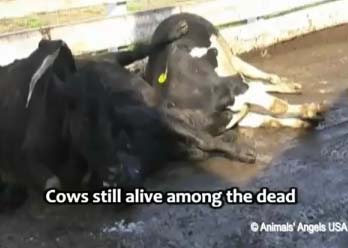
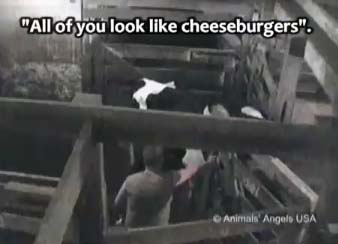
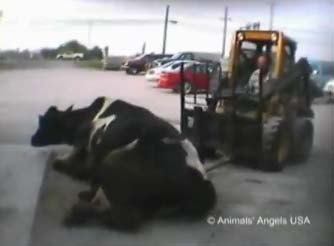
This is from the Animal Angels website...
Animals’ Angels Inc. is a 501 (c)(3) non profit organization incorporated in Maryland with a team of investigators working nationwide. Our mission is to improve conditions for farm animals. We work primarily in the field, inspecting livestock trucks on highways, visiting markets, collecting stations and slaughter plants.
Our documented reports and video footage are provided to news media as a public service. We present our investigation results to auction and slaughter plant management, to encourage positive change in the way farm animals are handled during transportation, at auction, and at slaughter. We share documentation of cruelty with law enforcement to ensure that violators of animal protection laws are being held responsible for their actions.
So you be the judge, are they all about Animal Welfare? Making sure the animals are taken care of well as animals. Or are they about Animal Rights and working towards ending all animal agriculture?
I hope I was able to explain some aspects of this video. While the images are not pretty and are hard to look at a little information about what is going on sure sheds a different light on what you are seeing. If you have any questions or comments please leave them below and I will try and answer them. Remember, if this is your first time commenting on my blog your comment will have to be approved before it is posted.

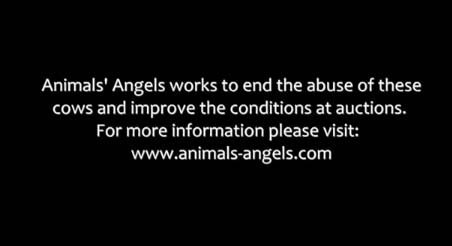
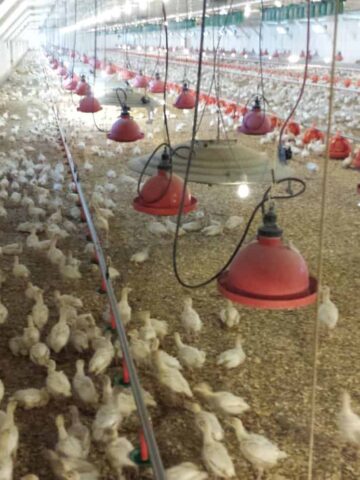
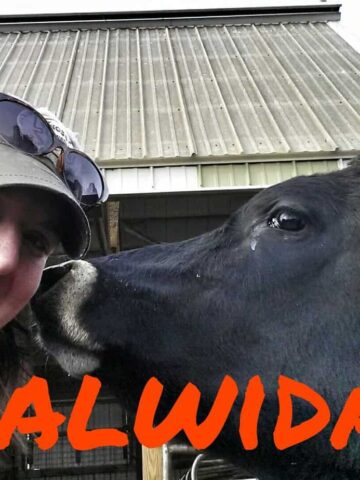
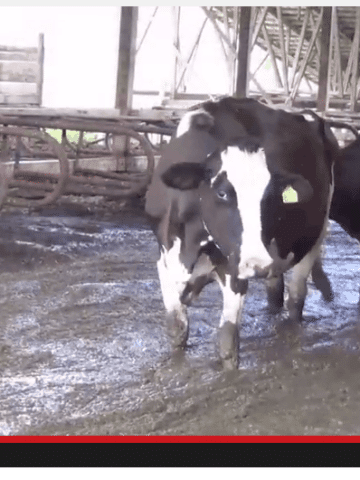

rushoffthefarm
Thanks for dealing with this honestly. There are harsh realities to every part of life. While we love farming, it can be heartbreaking sometimes. We just have to focus on the heartwarming aspects to get us through the tough times, right?
dairycarrie
The bad days are always outnumbered by the good.
Mandy Deveno
Thank you for responding to this video. You did a great job explaining this very bias video. Too many people have no idea what they are talking about when it comes to livestock.
dairycarrie
Thanks Mandy!
Sue Fitz
I just hope people watc and READ this! Carrie, you did an excellent job explaining what is ACTUALLY happening on a dairy farm!
Ann
Excellent AG-vocating! It can be frustrating seeing these types of spots on tv or floating around the internet. Thank you for taking the time to respond to each claim and correct misconceptions regarding proper management practices. There is always work to be done with regard to communicating with consumers. The industry needs people who are willing to listen to the rumblings and are ready to engage in discussion. Well done.
dairycarrie
Thank you Ann.
the south dakota cowgirl
I think you did a good job explaining the fallacies and false premise upon which their "facts" were based. I think Animal Angels sounds like a useless non-profit that should educate themselves about ag a bit more before presenting things as "facts" that are clearly untrue.
dairycarrie
Thanks Jenn!
The Queen
Everytime I see this vid, I scream at the TV! No, it does no good but I feel better. The way these people twist the so-called documented info is beyond false. Not "biased". Just not the truth. A lie, to be blunt. We get the steers, eventually, that can't live at the dairy cause they're guys. Even then, every possible care is taken that they are NOT stressed. They are treated with care. Dare I say it? Even treated with love. Yes, that's right. The folks at this farm realize that the cattle here have been placed in our care/stewardship.
Excellent job taking this vid apart piece by piece, dairycarrie. Wish you put this on national TV as a counter. But that would be pushing the "bias" thing a bit far...or fair.
Reblogging with your permission?!
dairycarrie
Of course you can reblog! I'd appreciate it!
The Queen
Reblogged this on Everything You Ever Wanted to Know About Country Life and commented:
You MUST read this!!! I know some of you have seen this BEYOND FALSE vid on tv. Could these people twist the truth any further? Don't answer that...
Sarah
Nice job taking this video apart and explaining what was being done and why!
dairycarrie
Thank you Sarah!
The Queen
Now...how do we get your message out there? This is the part that's so frustrating.
"They" can say anything in these vids but how do we rebutt? Someone out there...HELP!!!
Penny
Leave a video reply on YouTube. Read this post or do play-by-play commentary on the original video. Sort of like the "extra features" on a DVD. Offer to answer any sincere question, respectfully asked.
Heck, make it a YouTube channel. Get experts in different areas of ag to answer questions. Like #agchat but on YouTube. Tube chat? If there is already a channel like this out there, send me a link. I'd like to see it.
dairycarrie
Thanks Penny! Good ideas you have! One day soon I will have to start making videos.
Ellen
Aw yeah Carrie! You tell em. I loved this.
dairycarrie
Thanks Ellen! I try. 🙂
Emily
Hi Carrie, great blog! I looked much like the guy pulling the calf this morning, and resulted in two live calves and a healthy cow!! Can't see any problem with any of the on-farm footage, people just don't understand really. Regarding the yards/abbattoir footage, i'm sure most would agree that it's pretty unacceptable to attempt to force a cow who clearly can't to stand up, or push them around with bob-cats etc while alive, don't the abbattoirs have a policy to euthanise these cows where they sit, and have any changes been made since the release of this footage?
dairycarrie
Thank you Emily. As far as your questions go about lifting the cows. We have often had cows that would stand if they could just get some help getting their hind end lifted. Without knowing more about the situation I would think that is what they are trying to do in the video.
Emily
Hi Carrie, we have many cows which need lifting too, normally we use hip clamps, so it's surprising that the sale yards aren't equipped with such tools. It would be interesting to know the exact situation of course, and over what time period the footage was taken, and i don't like to jump to conclusions, but we can't make positive change without accepting weaknesses 🙂
Beaulieu
Hi Dairy Carrie,
Thank you for deconstructing the video. We have Canadians asking questions here after seeing this video. Of course, the Internet knows no border, and while our weather means that we have barns instead of the wall-less shelters in this video, and typical farms smaller that this one, I was able to offer the link to your blog as part of situating what farmers do on our farms as well.
dairycarrie
Well thank you very much for sharing! I love that I was able to help you reach out!
Megan
I shared the video as well on my blog-https://eatprayfarm.com/archives/961 , hope you don't mind- what an absolutely fantastic explanation!!
dairycarrie
Thank you for sharing Megan.
Elizabeth Martin
Just "discovered your blog!" and I think this is one of the best posts about actual animal welfare vs. welfare caught on videos ever! Thanks for that!
dairycarrie
Thank you Elizabeth!
Jules
Carrie very nice job promoting for our industry. If people only knew how truly loved and cared for our cows were....to the best of our abilities and facilities they would know that most dairy producers lose sleep waiting on a newborn calf and having to sell a cow to slaughter is rarely if ever an easy decision. You have to take care of your cows because they in turn take care of you!
Amanda
Thank you so much for posting this! I will definitely share the link on my blog as well. People can put anything to together and throw it on the internet. I'm so sick of misinformation like this getting out a smearing good farmers.
An Irish Male In America
Best informative reply to such a video ever! To the uninitiated consumer like myself, this footage can look shocking, distressing and it's no wonder people are upset by seeing such a thing. You can't blame the public, they don't know these things and the video is edited and peppered with "facts" in such as way as to be misleading. This is a great step in educating people and thank you for sharing.
Martine
"Wild Holstein herds out west" hahaha, funniest thing I have heard all day! Thanks for the great explinations, you are a great advocate for the dairy industry!
Cristan Harris
Love love love this post!!! My husband and I own, live, and work on our dairy! I am trying to educate people all the time on how these videos are manipulated, cropped and just plain dumb!!! Thank you so much for shedding light on the subject! I will keep following and reading what all you have to say!!!
Thanks again!
Cristan Harris
Rising Star, TX
crazyfarmlife
Up here in new england we use the bull calves for trained/working steers or as they get older oxen. You want to see crap fly OMG. Excellent job describing what is going on in this video. P.s. my boys are beautiful linebacks 😉
Christy
I started following you for just this reason. I Live in California and guess what, believe it or not there are a lot of dairy farms out here. I am old and have never driven past a cow farm and seen any kind of suffering. That is why I was so confused about seeing tapes like the one you showed. In my lifetime I have heard, no pun... well maybe it was intended, of only one, possibly two in my whole life, farms that were mistreating cows. I think this would be a great film, and perhaps you would have to make your own because of copyright laws, Showing the "bad things" that happen on the farm with happy ending and the truth endings so people can see how a farm is ran. ( this could be sent to high schools.) On the other hand, the little kids say starting in third grade, should be exposed to what goes on day to day, without the mishaps. Where I live we are lucky to have the Orange County Fairgrounds. They have a up and running farm. Our kids get to take a tour of the farm in grade schools. Also at my childrens school they were able to watch chicken eggs incubate in the classrooms. They did that in Kindergarten. We really need to expose kids to this kind of life. Kids that are never going to see or experience a farm but need to know where their food comes from. What farmers ideas and opinions are. They need to know that there are people like Dairy Carrie that name her calfs and get up early to make sure a birthing cow is okay.
dairycarrie
Thank you Christy 🙂
leah shattuck
We all have to stand up or the right to own animals. Those who make their living with them probably don't hate them. What are these people thinking ? They do not want any animal ownership ! Keep n exposing and standing up to them.
2013jjj
It's not that these organizations are opposing animal ownership-it's that they are opposing animal exploitation. They don't believe animals are a resource, they believe animals have the right to their own life and body without human manipulation.
Carrie
I'm sorry, as sad as people think this video is, the little captions made me laugh, because I know why they are doing what they are doing... but they also made me angry, you shove misinformation down people's throat enough, people will start to believe the lies. Thank you for the breakdown of the video!
DC
Your definition of Animal Rights lacks something important. Although the idea of animal rights is to afford humans and animals equal treatment it does not include a right to life. The rules include no police horses, no seeing eye dogs, no fur and no meat. But they also include no pets! And what follows is pets are better off dead than enslaved. It's important because many people would follow a movement that wanted animals to be "treated like people". That's how they sell it. But that's not what it is.
2013jjj
Actually, this in inaccurate. For the majority of people who agree with an Animal RIghts ethics, they do believe an animal has as much a "right to life" as humans. This is why the farmed animal sanctuary movement is growing so rapidly-to give unwanted farmed animals a place to live the remainder of their life rather than go to slaughter! Furthermore, the majority of people who agree with an Animal Rights ethics, agree humans have a responsibility to care for domesticated "pets" such as dogs and cats, they just don't agree that we should be breeding more of them into this world when so many are sitting unwanted in shelters!
Tribur Zoe
This is really interesting! What a great blog. I have relatives who are ex-dairy farmers (they now raise beef cattle), but for obvious reasons I haven't spent much time around the actual working part of the farm. I have, however, spent some time with sedentary farmers and semi-nomadic pastoralists in China's far-west and have some first-hand experience with how animals live in these sort of traditional, non-mechanized agricultural societies. Yaks also "down", although I imagine the problem is more or less severe depending on the yak breed, which can range from fairly massive (I don't think they get as big as a holstein, but maybe in some places they do) to fairly petite. Yak herders also worry about what to do with an animal that goes down and won't get back up and try to help animals as they can, but a lot of times, they just leave the situation up to nature, because they don't have the access to the kind of tools that you do. Predictably, lots of downed yaks just die. It's fairly common to encounter yak carcasses on any pasture.
Ditto for pulling a calf from its mother: I've never seen it, but I know people do it. I've also seen what happens when a calf is not pulled: dead calf and often dead mother, as well. Maternal mortality for yaks has to be quite a bit higher than for American cows. Maternal death death from injury and predation and sickness are all quite distressing for people who not only owe the majority of their physical well-being to their animals, but who also are culturally trained to think of the value of the lives of their animals as being cosmically equal to their own. Like Americans who raise animals for a living, Chinese farmers have a very strong motivation to keeping their animals alive and healthy. It's a delicate balance to ensure that a herd perpetuates itself enough to provide a living for the owners and, at least in the past, a "living" was very literal: if your herd dwindled, you might face actual death by disease or cold or starvation. I've also gotten to see the effects of a massive transition away from subsistence agriculture. For nomads, this often entails just leaving some portion of you herd to another's care as you move on to the city. People sometimes do a bad job of caring for another's herd and these animals simply die off in a couple of years without direct care. They have access to all that nature provides, including all of its life-depriving hardships. Another way the transition happens is that people simply sell off their whole herd and the only people willing to buy a whole herd are butchers. I'm not sure what advocates against animal husbandry think of this inevitable consequence for actually abolishing animal husbandry: the mass death of animals.
Life is an often brutal experience for every one of us. Caring for an animal, then, entails direct involvement with a lot of that brutality and, yes, at the end of the day, if you use/exploit an animal for anything, be it food or fiber or transportation, it is inevitable that you will be the direct source of some of that brutality, some time. But a lot of the pain and suffering that cows and chickens and sheep and goats experience while living on ranches or farms or whatever, is just the brutality that they would encounter living anywhere.
Holly Hanson Krentz
Thank you so much for your article! My husband and I own a large dairy and LOVE our animals. It is hard when you have a cow that has fallen ill and is unable to stand. We work with our vet to make the best decisions for this animal. There are many days when our employees work long hrs to get all the work done and then still take time to help move a cow to different positions so the cow does not get too stiff or sore. Some cows get pinched nerves in their backs while calving and are unable to stand for a day or two. During this time it is vital to change positions with this cow for the above reasons. Employee safety is always a concern too. We do at times need to use skid steers to move these 1200 pound plus cows. I cannot answer for all dairy farmers but I do know that most care for their animals and are in the business because it is their lifestyle....not just a job. On days like today when it's -30 below we still have animals to milk, calve, feed, etc. And we do it because we want too! Please do not judge all dairy farms by what you view/read in the media. If you do your not seeing the norm.
Be Calm and Hug Cows
Melissa Connolly
Thanks for breaking down the video. I agree with a lot of your comments and I'm certainly no expert. I think this "animal rights" group is definitely taking some things out of context and to be alarmist.
Anyway, I just happened to come across your site from a link posted on my vet's facebook page and I have been enjoying it so far.
My question about the video though is why are there so many "bad/injured/distressed" looking cows. Like around the 6 minute mark, it appears there are quite a few limping or having issues walking. Does that happen a lot?
And then toward the end, there just seems to be a lot of dead dying cows, for one single farm? Is that also normal? It just seems excessive.
I think there are farms that are wonderful and humane and do the best they can for their animals (it sounds like you are one of those) but then there are others that are the exact opposite. Could some of this video be from those types of farms?
dairycarrie
Hi Melissa,
You bring up an excellent point that I did not clarify in my post. The majority of this video was not shot on a farm, rather it's footage from the stockyards. The stockyards are where a farmer sends a cow that has had the career change to beef animal. So you'll see a higher percentage of animals that aren't in perfect shape.
If you looked on our dairy today you would see several limping cows. Today was hoof trimming day and the girls are a little tender on their toes. But by tomorrow they will be walking much better.
Melissa Connolly
That makes sense. Thank you for explaining it. Some of it was really rough to watch. I appreciate you taking the time too respond and educate.
2013jjj
But did the animals who are not in perfect shape originally come from the dairy farms? I'm just wondering what would have caused them to be injured, etc in the first place?
dairycarrie
Probably. Large animals can be hurt doing all kinds of things, just like us.
The Queen
This link might further answer some of these questions...from a feedyard point of view!! 🙂
https://wp.me/p1Ujnq-1Mi
Emma
Hello! Thank you so much for this post, it's great to get your views on this issue. I was wondering if you could point me to your sources for some of the things you said? Mainly I'm wondering where you've heard that most male calves go to the beef industry rather than the veal industry. Don't get me wrong, I believe you, but I have vegetarian and vegan friends who won't even LISTEN to statistics that may point to the fact that dairy can be humane unless they have a reliable source. Thanks!
dairycarrie
Emma, my post comes from my own knowledge of selling bull calves and the dairy beef industry. The market for veal in the US simply isn't large enough to have large amounts of bull calves being raised for veal.
Daniel Holton
Hey Carrie, I have just read your blog post. I myself was raised on a dairy, and can't seem to stay away from it. Maybe a few years ago I would have put subtitles on this video just like you did. Explain what was being done to the cows and why. Basically defend what most dairys do. But the more I reflect on our small 300 cow confinement dairy and current dairy practices in general, I fail to find an argument to support certain things.
Keeping cows on concrete, they are just not made to spend the majority of their life on a hard slick surface. It causes lots of health issues and shortens a cows productive life. Four to four and a half is pretty much the average life of our dairy cows. That's only two to two and a half lactations. Really? Can't we do better? Most of the milk in the us is produced in confinement dairies, yes I know, people will argue that cow comfort is improved with free stalls and fans and sprinkler systems, but why has average cow life not improved?
Calving issues, I have no idea how many calves I have pulled. For my age I know it's a lot. Do our dairy cows really need to be as big as they are? Big cows = big problems. A friend of mine calved 160 cows and heifers this spring and pulled two, because he has a moderate sized cow and breeds for calving ease. Did I mention he did this outside?
Quality of life for the farmer and their family. This above all deserves a lot of thought by what farmers are left. Yeah, you can work those 15-18 hour days. But why? Why should we work that hard for so very little?. You pointed out in another post what your in laws made, four or five bucks an hour. It's downright shameful that we consider that acceptable.
Independence, now that is a quaint and novel idea in the commercial dairy industry. Think you are independent? I doubt it, most of us are a price taker. We take what the local processor will offer and you better consider your self lucky if you have two processors to choose from. In my area our coop owns all the processors, the ones they haven't closed yet.
We can not keep defending the status quo that our nations farmers operate under. We as Americans and American farmers have big problems with our health and food system, but all we want to do is defend it and pat ourselves on the back cause we are so damn 'efficient'.
dairycarrie
Hi Daniel,
You bring up interesting points but I feel like you're not considering many important pieces of the story.
Average lifespan of dairy cattle on farms doesn't exactly translate to the health of cows. On our 100 cow dairy farm we have around 50 heifers calve in each year. At 100 calvings a year and half being heifers, this is pretty well average. If we were wanting to grow our herd, we would be set, however we want to stay around 100 cows. This means each year we must make room for almost half of our herd to be replaced. We do sell some cows to other dairy farmers but we also cull cows that arent measuring up for different reasons. Now we could choose to sell heifers instead but not only is it difficult to get a price for heifers that is equal to the cost you have to raise them, with genetic advancement, our heifers should be better cows than the cows we milk today.
I do believe cow comfort has vastly improved, but it isn't the only factor that ties into average cow life. It's not that simple.
As far as calving issues go, if you've looked at a sire book in the last 5 years, you'll see that the majority of sires are trending down in size. Big cows can have problems but so can Jersey cows. One of the worst OB cases we've had on our farm was with a Jersey. Again, calving issues aren't so simply chalked up to size of the cows.
As far as quality of life, that's another huge subject that's incredibly complicated and isn't going to get solved in blog comments.
I will continue to talk about what I do, I will continue to offer another side of the story when I see a video like this because I do think our customers deserve to know the full story. We should all strive to do better as farmers but you're not the guy that gets to decide what better is for another farmer.
Daniel
Carrie thank you for taking the time to reply.
Perhaps most of my comment was a bit out of place, dairying is vastly complex and short comments are a poor way to discuss it.
I like what you are doing with your blog and interaction with the consumers of your product, I'm not trying to attack that.
I'm just trying to point out that some practices that consumers are starting to take issue with don't make sense to a person who comes from a dairy either.